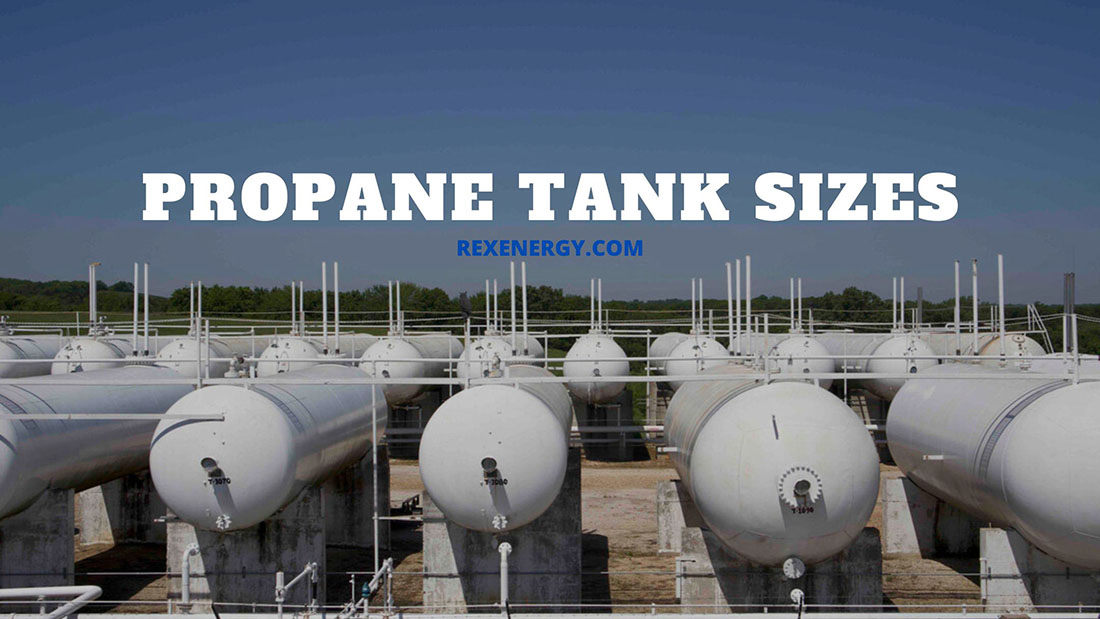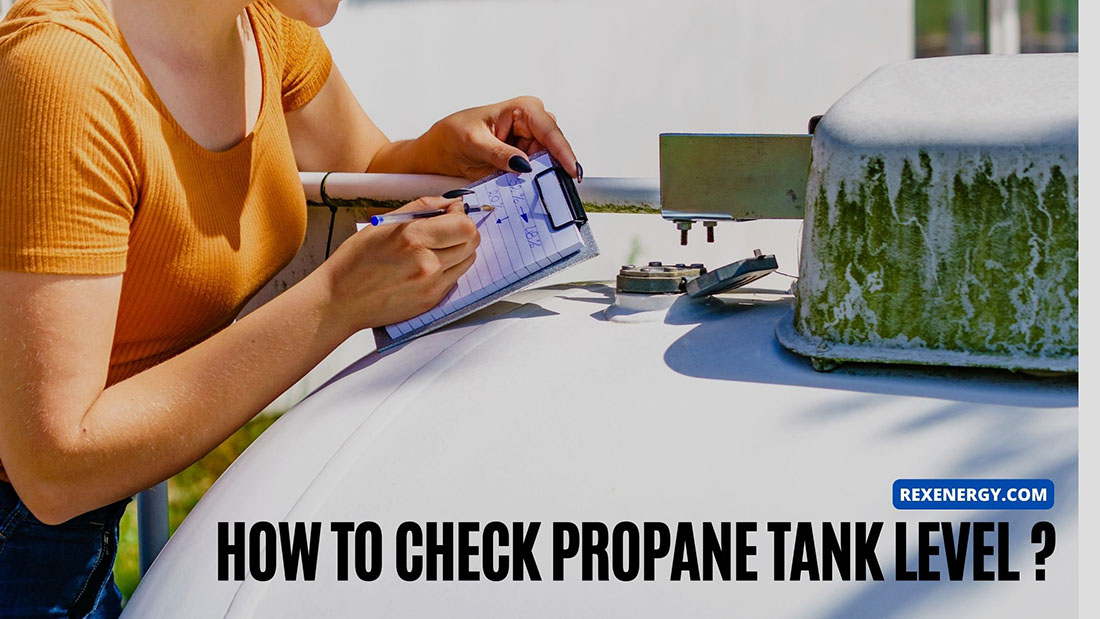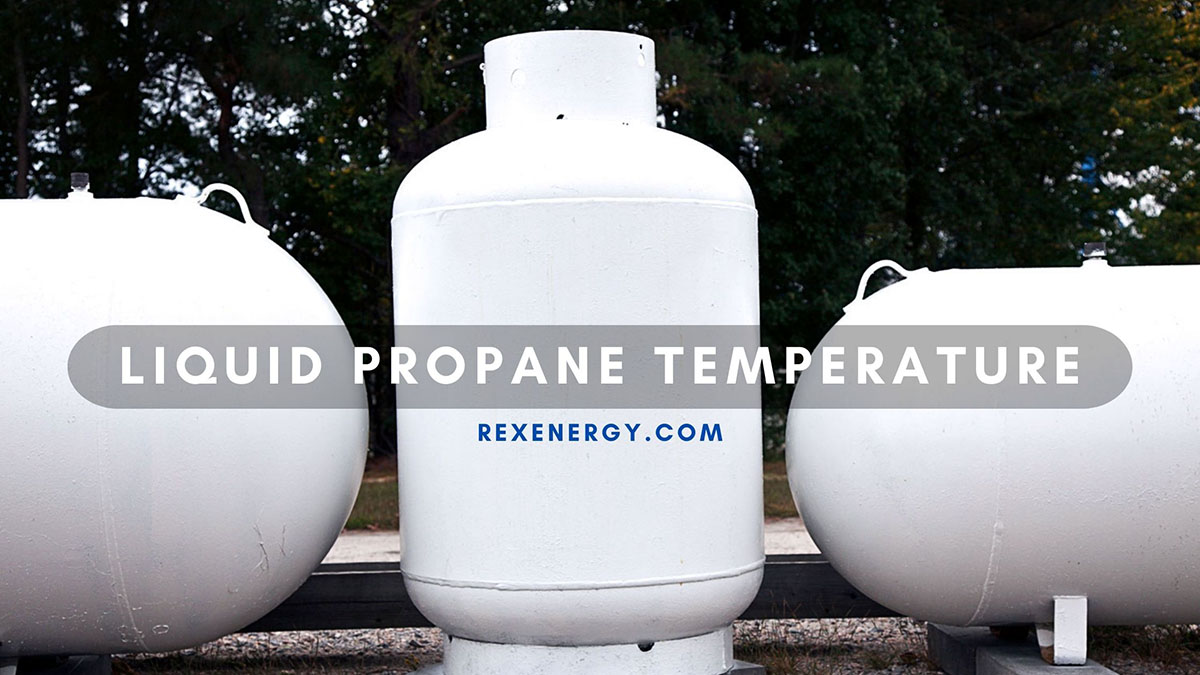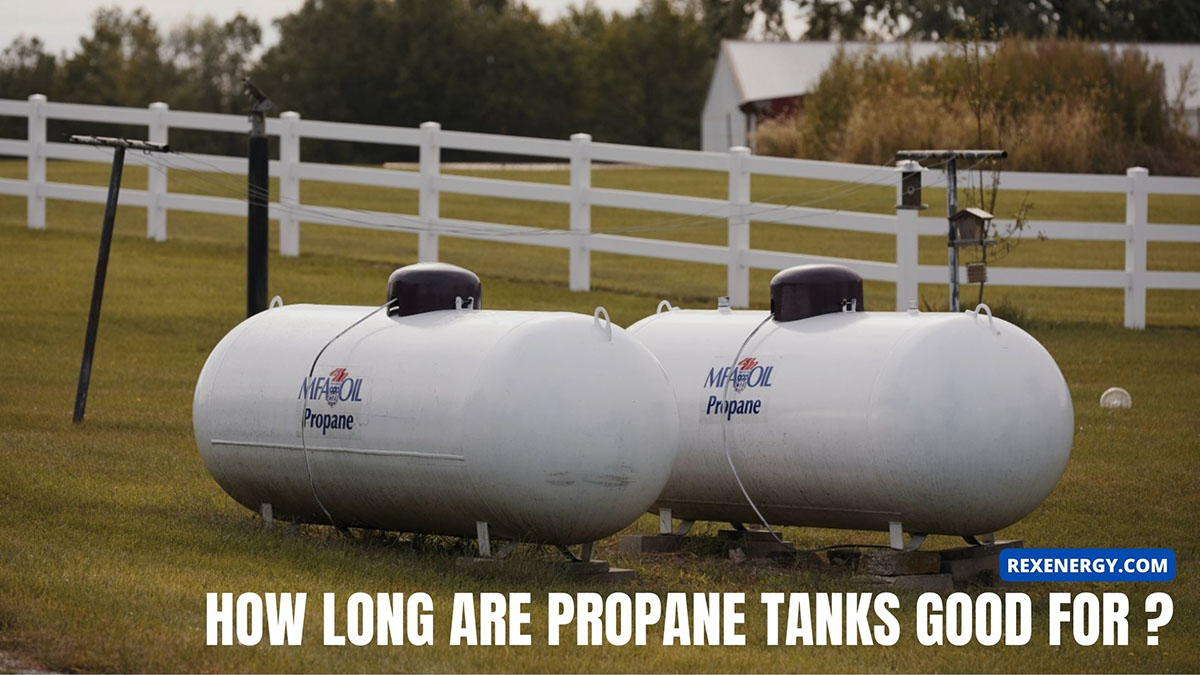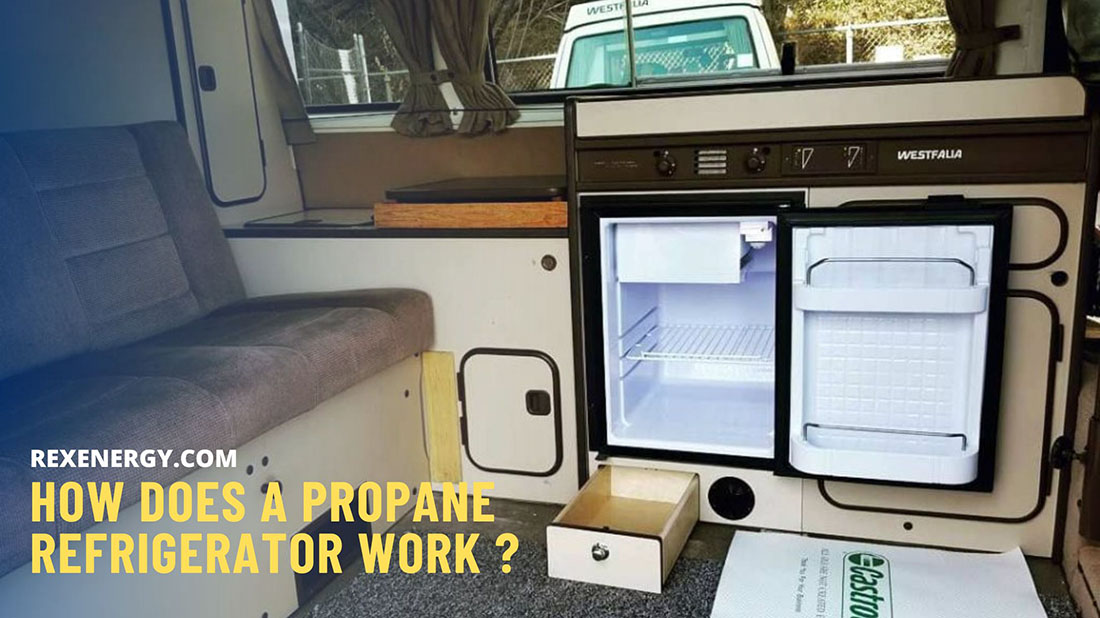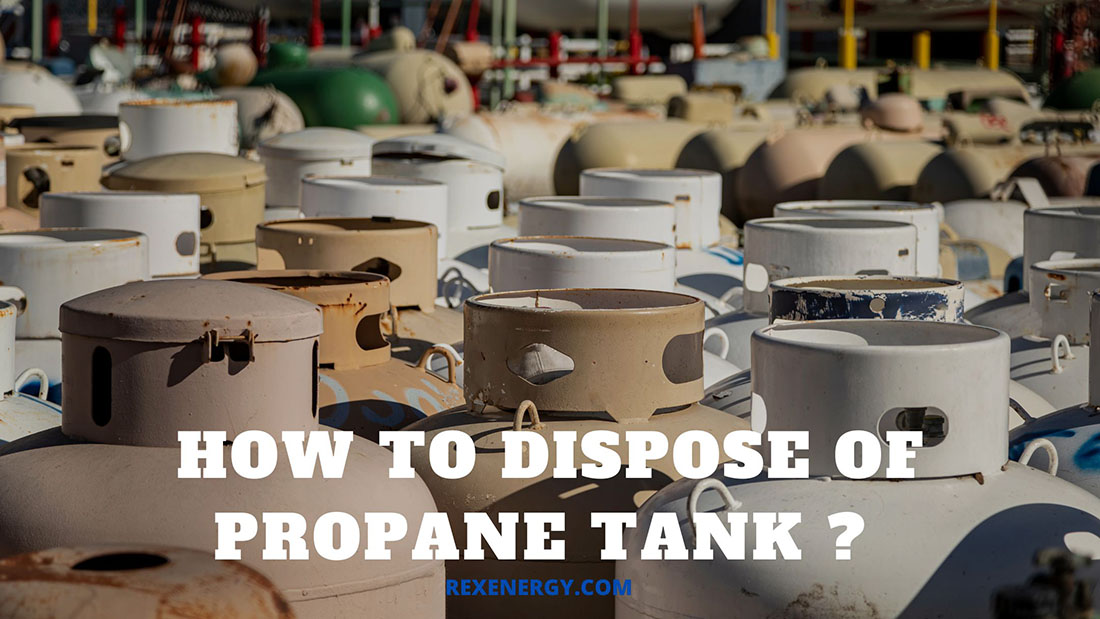Propane containers, also called propane tanks, are available in a diverse range of size options, offering versatility and efficiency for various uses. However, selecting the perfect propane container size to meet your specific needs can be a puzzle.
The world of propane tanks is as varied as it is vital, with differing common sizes and standard configurations. Moreover, you can opt for aboveground or underground placement. Join us as we explore this universe and unveil the ideal tank size!
Common Propane Tank Size Chart and Their Applications
This is a comprehensive guide to understanding different tank sizes and their practical applications for residential and commercial uses. Let’s explore how these sizes fit your specific needs.
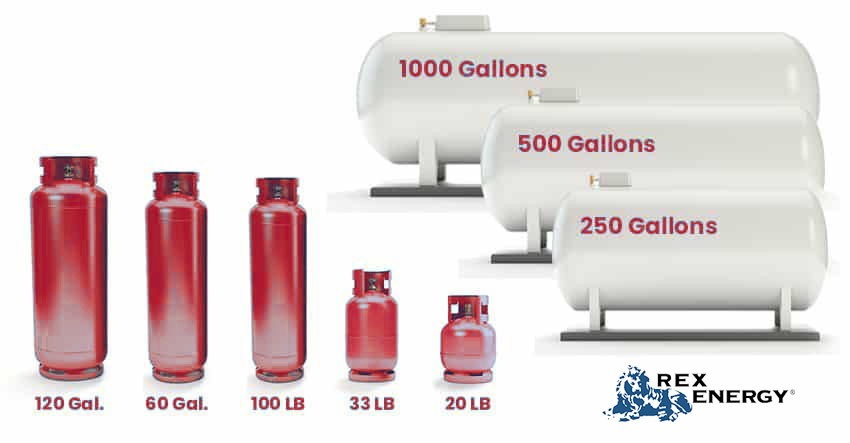
| Tank Size | Dimensions (Height x Diameter in inches) | Common Uses |
| 20 LB Tank (Barbecue Tank – about 5 gallons) | 18.4 H x 12.3 D | Grilling, camping, BBQ parties, portable heaters, traveling |
| 33 LB Tank (about 8 gallons) | 21.2 H x 12.2 D | Grilling, patio heaters, small appliances |
| 100 LB Tank (about 23.6 gallons) | 45.2 H x 15.6 D | Residential heating, small commercial appliances |
| 60 Gallon Tank | 48 H x 28 D | Home heating, cooking, water heating |
| 120 Gallon Tank (or 420 LB Tank) | 46 H x 30 D | Residential heating, hot water, cooking, generators |
| 250 Gallon Tank | 52 H x 30 D | Home heating, cooking, backup power |
| 320 Gallon Tank | 52 H x 30 D | Home heating, water heating, larger appliances |
| 500 Gallon Tank | 52 H x 37 D | Large residences, heating, agricultural use |
| 1,000 Gallon Tank | 50 H x 41 D | Large residential, commercial, and industrial use |
| 1,990 Gallon Tank | 68 H x 72 D | Large industrial and agricultural applications |
| 30,000 Gallon Tank | Varies | Industrial and commercial applications |
Other Sizes of Propane Tanks For Different Uses
Propane tanks come in various sizes to cater to a wide range of applications. In addition to the common propane tank sizes, specialized options are designed to suit specific needs. Here, we’ll explore three of these propane tank variations:
Propane Cylinder Sizes for RVs
The RV propane tank is a vital fuel source for your recreational vehicle. It ensures the operation of essential appliances like your fridge, hot water system, furnace, and stove burners.
There are two primary types of RV propane tanks: the ASME (permanent) and the DOT (removable).
Common sizes include 20-pound (18 inches long, 12.5 inches in diameter), 30-pound (24 inches long, 12.5 inches in diameter), and 40-pound (29 inches long, 12.5 inches in diameter).
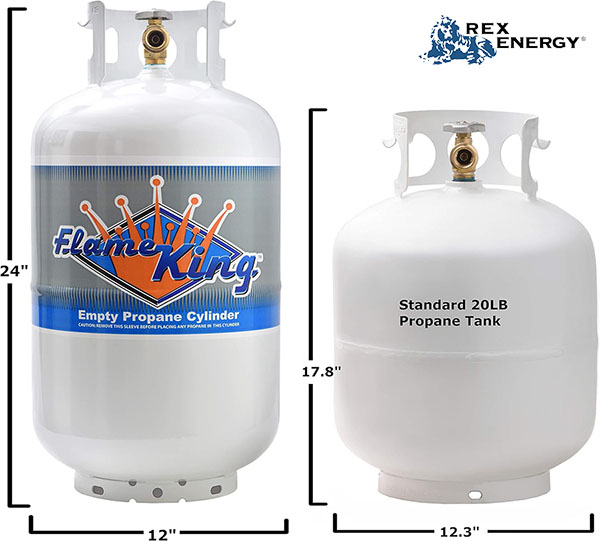
Portable Propane Tank Sizes for Grills
Portable grill tanks offer a convenient propane source for backyard and portable grills.
The most common size, readily available at Flame King, is the 20-pound tank, measuring 18 inches in height and 12 inches in diameter, with a capacity of 20 gallons. Their benefits include portability, ease of use, and versatility.
These tanks are commonly used for backyard grilling, camping, and outdoor cooking.
Propane Forklift Cylinder Size
Propane forklifts are indispensable in the warehouse, construction, and agricultural sectors.
Ferrellgas offers 33-pound and 43-pound tanks, with dimensions of 33.3 inches in height and 12.2 inches in diameter for the 33-pound tank and 26.75 inches in height and 12.5 inches in diameter for the 43-pound tank.
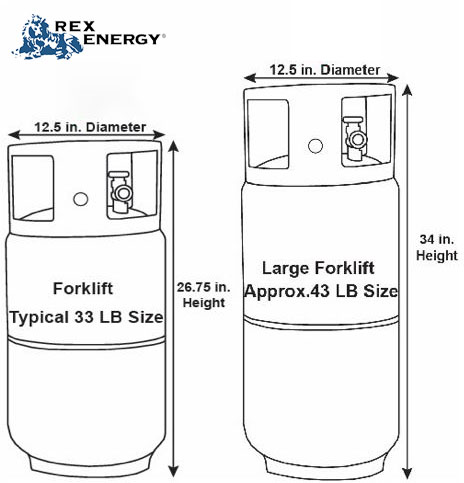
The benefits of these forklift propane tanks include durability, reliability, and efficient fueling. They are commonly used to power forklifts and material handling equipment in various industrial and commercial settings.
What Should You Consider When Selecting An Industrial Or Home Propane Tank?
How Frequently Do You Use Propane, And For What Purposes?
When deciding on propane tank capacity, evaluating your usage patterns is crucial. Residential propane applications include heating, hot water, cooking, and appliances. In contrast, industrial and commercial sectors often use propane for machinery and heating.
For occasional use like grilling, a 20-pound tank suffices. Extended needs, such as seasonal pool heating, benefit from a larger 120-gallon tank. Residential homes relying on propane for primary heating and appliances often opt for a 500-gallon tank to reduce refill frequency and ensure efficient heating.
Moreover, in winter-focused usage, smaller tanks save costs and space. Alternatively, a larger tank is a suitable choice for those who prefer stockpiling propane during low-price periods. Considering these factors, you can confidently choose the right propane tank size for your residential or commercial needs.
Where Would You Like Your Propane Tank To Be Placed?
Propane tank installation plays a key role in capacity decisions. Aboveground tanks are a common choice and come in various sizes, including mid-size and larger options.
Your choice will depend on factors such as the available space, local regulations, and aesthetic considerations. Commercial propane tanks must also be strategically placed in an accessible location to ensure ease of refills and maintenance.
How Large Is Your Home Or Business?
The square footage of your home is a critical determinant of propane tank size. For heating purposes, you must calculate the propane needed to adequately cover your home’s square footage.
Opting for a tank that can’t meet your heating needs may result in more frequent refills, leading to higher costs. A 500-gallon tank is often the best choice for homes using propane for heating and powering appliances. Larger homes that exceed 3,500 square feet require two 500-gallon or a larger underground tank.
Conclusion
Knowing the standard propane tank sizes, you can choose the right one for intended use. Also, consider how you use it, the size of your place, and where it’s located. Whether you’re using it at home or for business, understanding your propane needs is essential.
Taking good care of your tank and disposing of old ones properly keeps things safe and efficient, guaranteeing a steady supply of propane whenever you need it.

